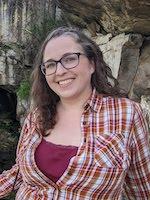






While more than 5,000 schools have their own GIS servers (see https://arcg.is/usk12gis), very few teachers are engaged or even aware of this powerful technology for inquiry-based learning. For the past five years, we have engaged in a series of collaborations with schools in Pennsylvania, Delaware, Texas, and Washington to assist teachers in mastering geospatial tools and integrating them into their curricular instruction. We have conducted professional development (in both face-to-face and online-only) formats to help teachers learn the technologies, explore different approaches to geospatial teaching, and build curriculum-aligned lessons that engage their students by exploring local issues, incorporate authentic data collection, and feature inquiry-driven learning. We have a curriculum development model that we follow (socio-environmental science investigations, or SESI--see Hammond et al., 2019) and a proven professional development sequence (see Hammond et al., 2018).
This session will highlight an instructional sequence in which students learn about geospatial tools, engage in data collection, and then design their data collection as they engage in geospatial inquiry. This sequence has been developed and iterated by high school science and social studies teachers in Philadelphia and will feature participation by their students who have completed this learning sequence.
At the end of the session, our participants will be able to:
Name and describe three free, cloud-based geospatial tools for teaching middle and secondary curriculum-aligned lessons: ArcGIS Online, Story Maps, and the Field Maps app.
Locate and adapt three sample lessons that teach curricular content through inquiry-driven, localized instruction using geospatial tools. These lessons can be run in online, face-to-face, or hybrid formats, depending upon what the circumstances of the school and community allow.
Describe how to build data collectors in ArcGIS Online and scaffold students’ work in building their own data collectors for local geospatial inquiry.
We will feature three teacher-developed lessons from a participating Philadelphia public school:
An introduction to geospatial tools and geospatial inquiry: Urban Heat Islands in Philadelphia (https://storymaps.arcgis.com/stories/8c767938f573494e8ec44a1ec4cf5c70)
An introduction to collecting geo-referenced data: Cultural geography through religious facilities. Students will collect data in their own neighborhoods, using a collector designed by the teacher.
Geospatial inquiry using student-designed data collectors: Students complete ‘geospatial labs’ on school property, looking at topics such as tree biodiversity and soil chemistry. The students engage in an iterative process of designing collectors, collecting data, reviewing data, and then refining their design and implementation processes as they complete the lab activity.
Each of these activities make use of the three core geospatial technologies used in our project. All three technologies are completely free to use by K-12 institutions and can be implemented with or without student accounts.
ArcGIS Online (see https://b21.maps.arcgis.com/home/index.html for an example of a free, school-level account): This professional-grade, web-based GIS allows users to search, analyze, and annotate geospatial datasets.
Story Maps (see https://storymaps.arcgis.com/) allow teachers and students to create presentations that combine text, images, maps, datasets, videos, and more. Our teachers use story maps to explain curricular content and scaffold student data collection; students use story maps to present their final geospatial projects.
ArcGIS Field Maps (https://www.esri.com/en-us/arcgis/products/arcgis-field-maps/overview) is a free app for mobile devices; it connects to ArcGIS Online and allows students to collect geo-referenced data using forms set up by their teachers. Students and teachers can examine and analyze the collected data in ArcGIS Online, and combine them with other layers of geo-data.
Our work has been supported by a sequence of grants from the National Science Foundation (DRL-1614216, DRL-1949400).
The poster will feature screenshots of the three selected learning activities and their supporting materials, plus QR codes so that attendees can go straight to the digital versions of these materials. We will also have laptops with us to show the materials live with interested attendees. We will also have a takeaway sheet with a brief summary of the content, the QR codes to access the digital materials, and contact information for anyone who would like to follow up with us after the poster session.
During the poster session, the presenting teachers and students will, as needed, summarize the instructional sequence, explain the technology used, demonstrate processes (such as building a data collector on the spot), share anecdotes from their experiences in the classroom, and (of course!) answer any questions that attendees might have.
Carrigan, J., Bodzin, A., Hammond, T., Rutzmoser, S., & Farina, W. (2019, April/May). Investigating urban trees. The Science Teacher, 27-35.
Hammond, T.C., Bodzin, A., Anastasio, D., Holland, B., Popejoy, K., & Sahagian, D. (2018). “You know you can do this, right?”: Developing geospatial technological pedagogical content knowledge (GS-TPACK) and enhancing teachers’ cartographic behaviors with Socio-Environmental Science Investigations (SESI). Cartography and Geographic Information Science, 45, 305-318.
Hammond, T.C., Bodzin, A., Anastasio, D., Holland, B., Popejoy, K., & Sahagian, D. (2019). Shoulder-to-shoulder: Teacher professional development and curriculum design and development for geospatial technology integration with science and social studies teachers. Contemporary Issues in Technology and Teacher Education, 19(2), 279-301.
Kangas, S., Hammond, T.C., & Bodzin, A. (2019). Using geospatial technology to teach language and content to English learners. TESOL Journal, 10(2), 1-12. DOI: 10.1002/tesj.422
Leeson, D., Hammond, T., Popejoy, K., Bodzin, A., Hardisky, M., & Lew, S. (In press). Eagles and wind turbines: Using maps to protect animals and increase renewable energy use. The Geography Teacher.